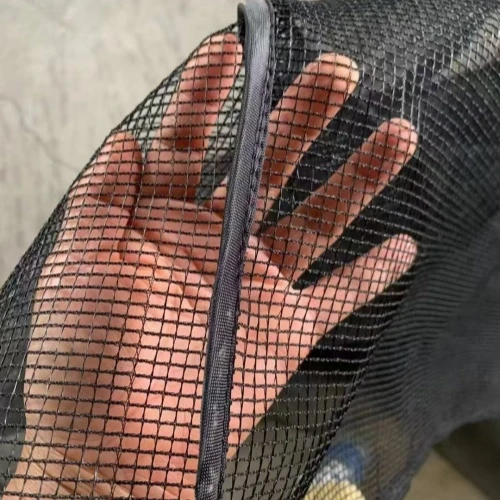-
 Afrikaans
Afrikaans -
 Albanian
Albanian -
 Amharic
Amharic -
 Arabic
Arabic -
 Armenian
Armenian -
 Azerbaijani
Azerbaijani -
 Basque
Basque -
 Belarusian
Belarusian -
 Bengali
Bengali -
 Bosnian
Bosnian -
 Bulgarian
Bulgarian -
 Catalan
Catalan -
 Cebuano
Cebuano -
 China
China -
 Corsican
Corsican -
 Croatian
Croatian -
 Czech
Czech -
 Danish
Danish -
 Dutch
Dutch -
 English
English -
 Esperanto
Esperanto -
 Estonian
Estonian -
 Finnish
Finnish -
 French
French -
 Frisian
Frisian -
 Galician
Galician -
 Georgian
Georgian -
 German
German -
 Greek
Greek -
 Gujarati
Gujarati -
 Haitian Creole
Haitian Creole -
 hausa
hausa -
 hawaiian
hawaiian -
 Hebrew
Hebrew -
 Hindi
Hindi -
 Miao
Miao -
 Hungarian
Hungarian -
 Icelandic
Icelandic -
 igbo
igbo -
 Indonesian
Indonesian -
 irish
irish -
 Italian
Italian -
 Japanese
Japanese -
 Javanese
Javanese -
 Kannada
Kannada -
 kazakh
kazakh -
 Khmer
Khmer -
 Rwandese
Rwandese -
 Korean
Korean -
 Kurdish
Kurdish -
 Kyrgyz
Kyrgyz -
 Lao
Lao -
 Latin
Latin -
 Latvian
Latvian -
 Lithuanian
Lithuanian -
 Luxembourgish
Luxembourgish -
 Macedonian
Macedonian -
 Malgashi
Malgashi -
 Malay
Malay -
 Malayalam
Malayalam -
 Maltese
Maltese -
 Maori
Maori -
 Marathi
Marathi -
 Mongolian
Mongolian -
 Myanmar
Myanmar -
 Nepali
Nepali -
 Norwegian
Norwegian -
 Norwegian
Norwegian -
 Occitan
Occitan -
 Pashto
Pashto -
 Persian
Persian -
 Polish
Polish -
 Portuguese
Portuguese -
 Punjabi
Punjabi -
 Romanian
Romanian -
 Russian
Russian -
 Samoan
Samoan -
 Scottish Gaelic
Scottish Gaelic -
 Serbian
Serbian -
 Sesotho
Sesotho -
 Shona
Shona -
 Sindhi
Sindhi -
 Sinhala
Sinhala -
 Slovak
Slovak -
 Slovenian
Slovenian -
 Somali
Somali -
 Spanish
Spanish -
 Sundanese
Sundanese -
 Swahili
Swahili -
 Swedish
Swedish -
 Tagalog
Tagalog -
 Tajik
Tajik -
 Tamil
Tamil -
 Tatar
Tatar -
 Telugu
Telugu -
 Thai
Thai -
 Turkish
Turkish -
 Turkmen
Turkmen -
 Ukrainian
Ukrainian -
 Urdu
Urdu -
 Uighur
Uighur -
 Uzbek
Uzbek -
 Vietnamese
Vietnamese -
 Welsh
Welsh -
 Bantu
Bantu -
 Yiddish
Yiddish -
 Yoruba
Yoruba -
 Zulu
Zulu
Fish Breeding Nets - Optimal Solutions for Aquaculture Success
The Importance of Fish Breeding Nets in Aquaculture
Fish breeding nets play a crucial role in the aquaculture industry, serving as indispensable tools for sustainable fish farming. These nets are specifically designed to provide a controlled environment for breeding, raising, and protecting fish from external threats. With the growing demand for seafood globally, the importance of effective breeding nets cannot be overstated, as they significantly contribute to the health and productivity of fish populations.
One primary advantage of using breeding nets is that they allow for precise management of fish breeding conditions. Aquaculture farmers can control various environmental factors such as water quality, temperature, and feeding regimes more efficiently than in open water systems. By providing a confined space, these nets reduce the risk of disease transmission among fish, which is a common concern in unrestricted environments. Healthy fish are essential for sustainable breeding cycles, and well-maintained nets help minimize stress and promote growth.
Breeding nets come in various sizes, shapes, and materials to cater to different fish species and farming conditions. For instance, larval nets designed for juvenile fish are typically smaller and help protect young fish from predators. In contrast, larger nets are employed to raise adult fish, where there is a need for a spacious environment for breeding and growth. The versatility of breeding nets allows aquaculture farmers to adapt to their specific needs, making them essential tools for successful fish farming.
fish breeding net

Moreover, fish breeding nets assist in enhancing the overall yield of aquaculture operations. By optimizing breeding environments, farmers can improve the survival rates of fish larvae and juveniles, which directly impacts the productivity of their operations. The controlled settings provided by breeding nets enable farmers to implement selective breeding practices effectively, allowing them to enhance desirable traits such as growth rate, disease resistance, and meat quality in their fish stocks.
Environmental sustainability is another critical aspect where fish breeding nets make a significant contribution. With overfishing and habitat destruction threatening wild fish populations, aquaculture presents a viable alternative to meet global fish demand. By utilizing breeding nets, farmers can raise fish in an environmentally responsible manner, reducing the reliance on wild-caught fish stocks and alleviating pressure on natural ecosystems.
In conclusion, fish breeding nets are essential tools in modern aquaculture, facilitating controlled breeding conditions, increasing fish productivity, and promoting sustainability. As the global population continues to grow, the demand for seafood is expected to rise correspondingly. Therefore, investing in innovative breeding net technology and best practices is vital for the future of fish farming. As aquaculture continues to evolve, breeding nets will undoubtedly play a prominent role in meeting the challenges of food security and environmental conservation, ensuring a sustainable supply of fish for generations to come.
-
Why Nylon Mesh Netting is Revolutionizing Industrial and Commercial ApplicationsNewsJun.13,2025
-
Reinventing Reliability with Construction Wire MeshNewsJun.13,2025
-
Protect Your Crops with High-Performance Agricultural Netting SolutionsNewsJun.13,2025
-
Premium Breeding Net Solutions for Modern AquariumsNewsJun.13,2025
-
Precision Filtration Solutions for Industrial and Commercial NeedsNewsJun.13,2025
-
Advanced Industrial Mesh Solutions for Every ApplicationNewsJun.13,2025











